






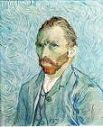










A Quick History of All Them European Artists |
By T.L. Winslow (TLW), the Historyscoper™ |
© Copyright by T.L. Winslow. All Rights Reserved. |
Original Pub. Date: July 1, 2010. Last Update: Sept. 20, 2025. |
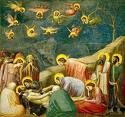



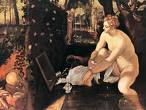
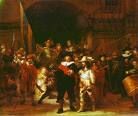

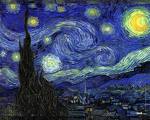

Ever feel low when know-it-alls drop names of European Classical, Renaissance, Romantic and Modern painters and sculptors? Here's a quick review mentioning all the key names with examples of their work, designed to keep you from mixing it up in your mind so you can come right back at them know-it-alls and show them they're pikers. Links are provided to help guide you into more serious study.
European art history may be split into the Prehistoric Period (to 1000 B.C.E.), the Classical Period (ancient Greece and Rome) (to 330 C.E.), the Byzantine Period (330-1453), the Romanesque Period (1000-1250), the Gothic Period (1150-1350), the Renaissance Period (1350-1550), the Mannerist Period (1520-1600), the dramatic Baroque (It. "imperfect pearl") Period (1600-1750), the Rococo Period (1750-1800), the Neoclassicist Period (1750-1830), and the Romantic Period (1780-1850), the latter four affected by the sadly fallacious Age of Reason (1650-1789), (which believed in the perfection of humanity based on the use of the reasoning faculty, and was shocked into the terrible truth of the beast inside man by the horrible French Revolution of 1789-99, after which things speeded up, with art movements incl. Realism and Naturalism (1850-), Modernism (1860-), Impressionism (1863-1970), Post-Impressionism (1886-1905), Symbolism (1886-), Fauvism (Matisse-ism) (1904-10), angst-ridden Expressionism (1905-), Cubism (1907-1929), anybody-can-do-it-but-can-they-sell-it Abstract Art (1912-), Purism (1918-25), and where's-my-burrito Surrealism (1920-), by which time Europe has been knocked down several pegs by its own ceaseless wars and had to accept the arrival of the New Kid on the Block Come to the Rescue Ugly Americans, which we won't cover here.


The prehistoric period happened before there was any history, therefore it's all mainly scientific speculation. The famous Venus of Willendorf limestone statuette from Lower Austria, which allegedly dates to 24,000 B.C.E., and the Cave Paintings of Lascaux near Montignac, France, allegedly dating to 14,000 B.C.E. show that there was artistic talent of a high order in skin-wearing Europe. Since there's no names to drop at parties, enough said, grunt. Too bad, civilization began in the East and diffused to the west, so Europe was the last to catch it, hence civilizations like Egypt and China were dying of old age before Crisco-butt Euros learned to read and write in about 1000 B.C.E., and even then, it was all about Greece at first, then Rome.

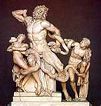
Way back before Christ and his Christian sex guilt trip, Greek and Roman pagan artists liked to show man like he is, all dangly, or hard and ready, ain't you seen horses do it? Too bad, the rise of Christianity killed all of this art off, and destroyed a whole bunch of it, which is now lost forever. In 476 C.E., only a century and a half after Christianity became the official religion of Rome (312 C.E.), Rome fell to the wild hairy Germanic Goths, get chilly in the Arctic snow as you learn about polar bears and mysterious caves, plunging Europe into the Dark Ages, and it took five hundred dark murky years to recover, with most people just trying to live from day to day while avoiding the latest marauding parties.


Meanwhile, the Eastern side of the Roman Empire survived, but it was forever in siege mode with the pesky Germans, followed by the even more pesky Muslims, who came out of the Arabian sands after the death of Prophet Muhammad in 632 C.E., trying to take Constantinople every year until they finally did it 800 years later. Safe within their triple walls, the Byzantines took refuge in their Eastern Orthodox religion, enslaving all art and culture to religious purposes, and even worse, froze it so that each artist had to produce an exact clone of the one before, which is what the Byzantines called icons, because they actually worshipped them. Back then, once you've seen one Christ you've seen them all. Since Muslims don't allow images of people, only texts of the Quran and an occasional Crescent Moon or star, it made the Byzantines love their lookin'-at-you Christ and other real fairy tale people icons even more.
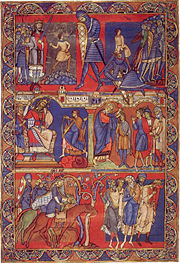
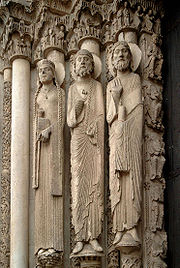
After slowly absorbing the Germans and Christianizing, only to suffer two centuries of pagan Vikings, who terrorized both sides of Europe for Thor and Oden, only to line up to convert as the Big Year 1000 came (just in case all the hype about the Millennium might be true and Christ actually returns to kick Thor's ass), Western Europe began to recover a little and spread out from the forts and castles into the sunlight again, I can give the kids ice cream more often. But the masses were steeped in such ignorance and poverty that there was little art created except by monks for churches and Bibles and fancy history books for the nobles and clergy, and the book art was all pretty miserly stuff, little figures with lots of bric-a-brac, a big bore, keep your eyes on the text and your hands visible, please.
Luckily, around 1150 some dudes sculpted some cool statues for the Western (Royal) Portal of Chartres Cathedral in France that revolutionized Romanesque Art, becoming known as Gothic Art, most of it on church walls, which used art to tell a narrative story, with the Virgin turning into a refined artistocratic lady and finally cuddling Baby Jesus instead of just posing for photo opps with him. Around 1200 secular painting finally emerged along with the new bourgeois class and universities (the U. of Paris was founded in the 1100s, and Oxford U. in 1167), but it was limited to frescos, as oil painting didn't become popular until the 15th and 16th centuries, and most of it didn't survive for us to see it like the gloomy Church stuff, distorting our view of those times, sorry, see Angels and Demons and check back with me.
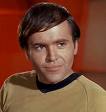

So let's face it, the European art we know was pretty much all hyper-religious and anonymous until the 13th century C.E., which isn't hard to understand since the Church was the main customer, they had the big bucks, and they got you where you live in the confessional. I guess it took that long to feel safe enough from the imminent return of Christey with his army of angels (which was long thought to be scheduled for 1000 years after his crucifixion, which is why they call it Millennium Fever) for individual artists to be brave enough to peek out of the brush with the brushes and try to take credit or paint a self-portrait. No wonder that modern history revisionists like Pavel Andreievich Chekhov of the 23rd cent. Star Fleet, and Anatoly Fomenko (1945-) of Russia have claimed that there was no 500-year Dark Ages, and that civilization was centered all along on the East side, with Constantinople being the real Rome all along, thus all of Western Science and Technology such as Nuclear Wessels was also invented in Mother Russia, and stolen by Western Capitalist Pigs. It also allows them to partially explain away the lack of a school of cool artists like Western Europe developed while Russia and the Orthodox Church stuck with their boring icons until the 1917 Russian Revolution - they can't claim that Westerners stole all that art too, since they're wearing incorrect costumes :).
Quibbling aside, Western art began ramping up in the late 13th century C.E., the era that brought us colorful Western European political leaders like Edward I Longshanks of England (1239-1307), Philip IV the Fair of France (1268-1314), and Sir William Wallace of Scotland (1272-1305), a full two centuries after the First Crusade of 1096-99 C.E, and two centuries before the Fall of Constantinople to the horrible Muslims in 1453 C.E., who began putting the big squeeze on Europe from the rising sun side and created the Culture-Bridging Mystery Man Barack, er, Dracula. From the get-go the artistic technique was well-developed and the use of colors sumptuous, making one wonder a bit about Fomenko being onto something, naw, just a fluke of history.
 Giovanni Cimabue (It. "ox head") (Cenni di Pepo) (1240-1302) of Florence, Italy.
Giovanni Cimabue (It. "ox head") (Cenni di Pepo) (1240-1302) of Florence, Italy.
 Pietro Cavallini (1250-1330) of Rome, Italy.
Pietro Cavallini (1250-1330) of Rome, Italy.
 Duccio di Buoninsegna (1255-1319) of Siena, Italy.
Duccio di Buoninsegna (1255-1319) of Siena, Italy.

 Giotto di Bondone (1267-1337) of Florence, Italy. Student of Cimabue, who introduced naturalism (the opposite of the stale world of icons) into his art, putting
Florence's main artistic rival Siena on the catch-up trail.
Giotto di Bondone (1267-1337) of Florence, Italy. Student of Cimabue, who introduced naturalism (the opposite of the stale world of icons) into his art, putting
Florence's main artistic rival Siena on the catch-up trail.
 Bernardo Daddi (1280-1348) of Florence, Italy. Pupil of Giotto.
Bernardo Daddi (1280-1348) of Florence, Italy. Pupil of Giotto.

 Pietro Lorenzetti (1280-1348) of Siena, Italy. Brought Giotto's naturalistic style to Siena, what does the money mean to you?
Pietro Lorenzetti (1280-1348) of Siena, Italy. Brought Giotto's naturalistic style to Siena, what does the money mean to you?
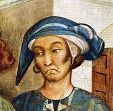
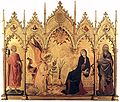 Simone Martini (1284-1344) of Siena, Italy. Fight for the faith, shine on.
Simone Martini (1284-1344) of Siena, Italy. Fight for the faith, shine on.
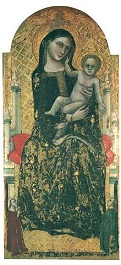
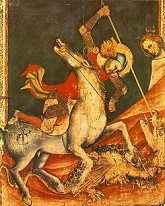 Vitale (Vidolini) da Bologna (1289/1309-1369) of Bologna, Italy
Vitale (Vidolini) da Bologna (1289/1309-1369) of Bologna, Italy
So, remember them 13th century names Cimabue, Cavallini, Daddi, Duccio, Giotto, Lorenzetti, Martini, and Vitale da Bologna for your next cocktail party, pass the cinnamon-imbued ducky Lorenzo's Oil martini, jaunty cavalier vital bologna daddy.
Actually, not 13th century names, but pre-Black Death names. Note the gaps in the painters before and after 1350. This is no accident. The horrible Black Death that hit Europe in 1347-50 and wiped out a third or a half of all the people changed everything, particularly the belief among the intellectually elite of the infallibility or divine connections of the Church. Those who survived began to be more easily content with their dog, wife and garden, and began the long process of breaking away from the heavenly preoccupations the Church wanted them to have to the earthly preoccupations they wanted to have, not to mention the ultimate earthly preoccupation of dirty filthy SEX, ramping up the Renaissance, where ironically the big brains had to go to the pesky Muslims in Spain and elsewhere to get Arabic translations of ancient pagan Greek and Roman texts that had been systematically wiped out on the west side of Europe, but inexplicably were mainly stored away safely in eastern European libraries in Constantinople and elsewhere. Don't accuse Islam of inventing Science, though. They just stole it from the ancient pagan Greek and Romans, and advanced it a little. It took the Good Side of Europe, the West, to really kick Science into high gear with giants like Galileo, Newton, Descartes, and Copernicus, passing the stale Muslim world by and leaving it in the weapons of mass destruction, er, dust. As to Renaissance style painting, until about 1400 it is mostly flat and two-dimensional, but filled with beautiful colors and textures.
If it weren't for the depleted population caused by the Black Death, things could have advanced faster than they did, but it wasn't until 1500 that the population was restocked to the pre-Black Death level and Europe took off to the stars again, starting with the Protestant Revolution of Martin Luther in 1517 that knocked the Church for a giant loop to this day, so the 15th century was a rather slow one.
Here are the main Euro artists of the 15th century C.E.

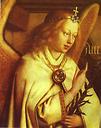 Jan van Eyck (1366-1441) of Netherlands. Member of the Flemish School, which perfected the art of oil painting.
Jan van Eyck (1366-1441) of Netherlands. Member of the Flemish School, which perfected the art of oil painting.

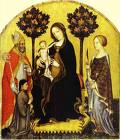 Gentile da Fabriano (1370-1427) of Italy (Gothic).
Gentile da Fabriano (1370-1427) of Italy (Gothic).

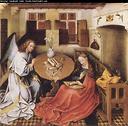 Robert Campin AKA the Master of Flemalle(1375-1444) of Netherlands. First great Dutch-Flemish painter.
Robert Campin AKA the Master of Flemalle(1375-1444) of Netherlands. First great Dutch-Flemish painter.


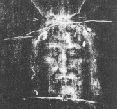
 Filippo Brunelleschi (1377-1446) of Florence, Italy.
He invented perspective, which means that until the 1420s all Euro paintings were flat and two-dimensional, with no concept of binocular vision or three dimensions,
except for that pesky inexplicable Shroud of Turin, C-14 dated at 1260-1390, which contains a 3-D hologram.
Filippo Brunelleschi (1377-1446) of Florence, Italy.
He invented perspective, which means that until the 1420s all Euro paintings were flat and two-dimensional, with no concept of binocular vision or three dimensions,
except for that pesky inexplicable Shroud of Turin, C-14 dated at 1260-1390, which contains a 3-D hologram.
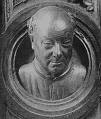
 Lorenzo Ghiberti (di Bartolo) (1378-1455) of Florence, Italy.
Lorenzo Ghiberti (di Bartolo) (1378-1455) of Florence, Italy.
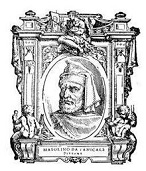
 Masolino ("Little Tom") da Panicale (Tommaso di Cristoforo Fini) (1383-1447) of Panicale (near Florence), Italy.
First to make use of a central vanishing point (1423), although credit is usually given to Brunelleschi.
Masolino ("Little Tom") da Panicale (Tommaso di Cristoforo Fini) (1383-1447) of Panicale (near Florence), Italy.
First to make use of a central vanishing point (1423), although credit is usually given to Brunelleschi.
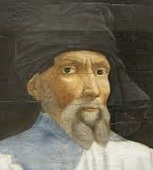
 Donatello (Donato di Niccolo di Betto Bardi) (1386-1466) of Florence, Italy.
Teacher of Bertoldo di Giovanni (1435-91), who was the teacher of Michelangelo (1475-1564).
Donatello (Donato di Niccolo di Betto Bardi) (1386-1466) of Florence, Italy.
Teacher of Bertoldo di Giovanni (1435-91), who was the teacher of Michelangelo (1475-1564).
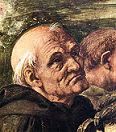
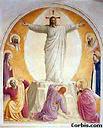 Fra Angelico (Guido di Pietro) (1395-1455) of Italy.
Fra Angelico (Guido di Pietro) (1395-1455) of Italy.
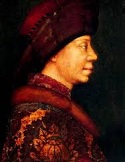
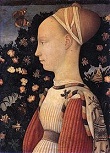
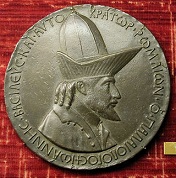 Pisanello (Antonio di Puccio Pisano (d Cereto) (1397-1455) of Pisa, Italy. Inventor of the portrait medal.
Pisanello (Antonio di Puccio Pisano (d Cereto) (1397-1455) of Pisa, Italy. Inventor of the portrait medal.
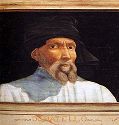
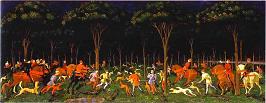 Paolo Uccello (Paolo di Dono) (1397-1475) of Florence, Italy. Big on visual perspective.
Paolo Uccello (Paolo di Dono) (1397-1475) of Florence, Italy. Big on visual perspective.

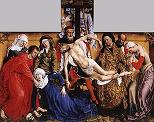 Rogier van der Weyden (Roger de la Pasture) (1399-1464) of Netherlands.
Rogier van der Weyden (Roger de la Pasture) (1399-1464) of Netherlands.

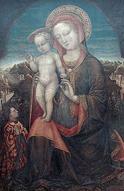 Jacopo Bellini (1400-70) of Venice, Italy. Founder of the Renaissance style of painting in Venice.
Jacopo Bellini (1400-70) of Venice, Italy. Founder of the Renaissance style of painting in Venice.

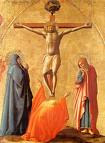 Masaccio (Tommaso di Ser Giovanni di Somone) (1401-28) of Italy. FIrst great painter of the Italian Renaissance Quattrocento (15th cent.) period.
Masaccio (Tommaso di Ser Giovanni di Somone) (1401-28) of Italy. FIrst great painter of the Italian Renaissance Quattrocento (15th cent.) period.

 Fra' Filippo (Lippo) Lippi (1406-69) of Florence, Italy.
Fra' Filippo (Lippo) Lippi (1406-69) of Florence, Italy.
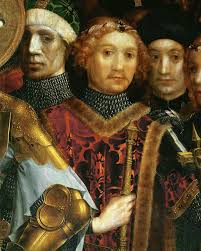
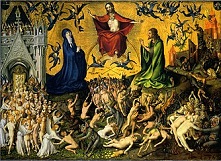
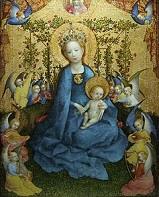 Stefan Lochner (1409-52) (AKA Master Stefan, Dombild Master) of Cologne, Germany. Most important German painter until Abrecht Durer. Leader of the Internat. Gothic School, known for long flowing lines and brilliant colors along with the realism and innovative iconography of the early Northern Renaissance.
Stefan Lochner (1409-52) (AKA Master Stefan, Dombild Master) of Cologne, Germany. Most important German painter until Abrecht Durer. Leader of the Internat. Gothic School, known for long flowing lines and brilliant colors along with the realism and innovative iconography of the early Northern Renaissance.

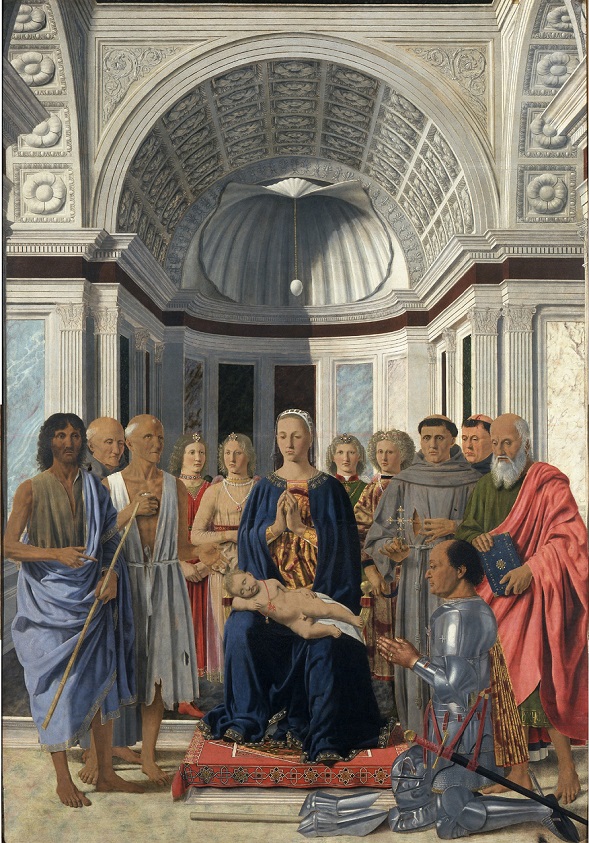 Piero della Francesca (1415-92) of Arezzo, Italy.
Piero della Francesca (1415-92) of Arezzo, Italy.

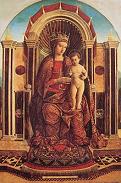 Gentile Bellini (1427-1507) of Venice, Italy. Son of Jacopo Bellini and brother of Giovanni Bellini.
Introduced oil painting to Venice.
Gentile Bellini (1427-1507) of Venice, Italy. Son of Jacopo Bellini and brother of Giovanni Bellini.
Introduced oil painting to Venice.

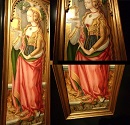
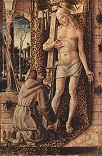
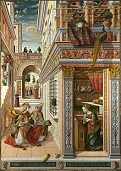 Carlo Crivelli (1430-1495) of Venice, Italy. Painted in tempera only. Liked decoratively punched gilded backgrounds.
"Camp is the paintings of Carlo Crivelli, with their real jewels and trompe-l'oeil insects and cracks in the masonry." (Susan Sontag)
Carlo Crivelli (1430-1495) of Venice, Italy. Painted in tempera only. Liked decoratively punched gilded backgrounds.
"Camp is the paintings of Carlo Crivelli, with their real jewels and trompe-l'oeil insects and cracks in the masonry." (Susan Sontag)

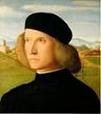 Giovanni Bellini (1430-1516) of Venice, Italy. Son of Jacopo Bellini and brother of Gentile Bellini.
Giovanni Bellini (1430-1516) of Venice, Italy. Son of Jacopo Bellini and brother of Gentile Bellini.

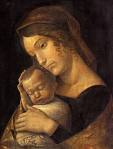 Andrea Mantegna (1431-1506) of Venice, Italy. Court artist to the Gonzagas of Mantua. Son-in-law of Jacopo Bellini.
Andrea Mantegna (1431-1506) of Venice, Italy. Court artist to the Gonzagas of Mantua. Son-in-law of Jacopo Bellini.

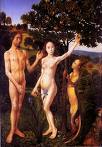 Hugo van der Goes (1440-83) of Netherlands.
Hugo van der Goes (1440-83) of Netherlands.
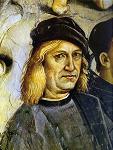
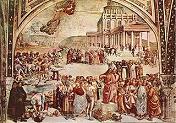 Luca Signorelli (1441-1523) of Cortona, Tuscany, Italy. Known for the use of foreshortening.
Luca Signorelli (1441-1523) of Cortona, Tuscany, Italy. Known for the use of foreshortening.

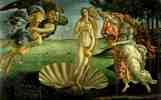
 Sandro Botticelli (Alessandro di Mariano di Vanni Filipepi) (1445-1510) of Florence, Italy.
Sandro Botticelli (Alessandro di Mariano di Vanni Filipepi) (1445-1510) of Florence, Italy.

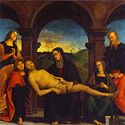 Il Perugino (Pietro Perugino) (Pietro Vannucci) (1446-1524) of Perugia, Italy.
Teacher of Raphael. Known for spacious landscape backgrounds bathed in fresh golden light.
Il Perugino (Pietro Perugino) (Pietro Vannucci) (1446-1524) of Perugia, Italy.
Teacher of Raphael. Known for spacious landscape backgrounds bathed in fresh golden light.

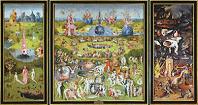
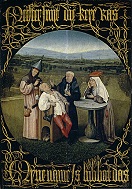 Hieronymus Bosch (Jheronimus van Aken) (1450-1516) of Netherlands.
Known for triptychs full of fantasy people, animals, demons etc.
Hieronymus Bosch (Jheronimus van Aken) (1450-1516) of Netherlands.
Known for triptychs full of fantasy people, animals, demons etc.


 Leonardo da Vinci (1452-1519) of Vinci, Italy.
Leonardo da Vinci (1452-1519) of Vinci, Italy.

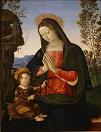 Pinturicchio (1454-1513) of Perugia, Italy. Pupil of Il Perugino.
Pinturicchio (1454-1513) of Perugia, Italy. Pupil of Il Perugino.
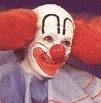
 Matthias Grunewald (Grünewald) (1470-1528) of Germany.
Matthias Grunewald (Grünewald) (1470-1528) of Germany.

 Albrecht Durer (Dürer) (1471-1528) of Germany.
Albrecht Durer (Dürer) (1471-1528) of Germany.

 Lucas Cranach the Elder (1472-1553) of Germany.
Lucas Cranach the Elder (1472-1553) of Germany.


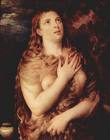 Titian (Tiziano Vecelli) (1473-1576) of Venice, Italy.
Ask me about Titian Red, we should do a movie.
Titian (Tiziano Vecelli) (1473-1576) of Venice, Italy.
Ask me about Titian Red, we should do a movie.
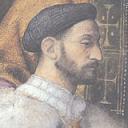
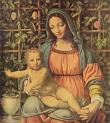 Bernardino Luini (1475-1532) of Dumenza, Italy.
Pupil of Leonardo da Vinci who painted females with slightly squinted "Luinesque" eyes.
Bernardino Luini (1475-1532) of Dumenza, Italy.
Pupil of Leonardo da Vinci who painted females with slightly squinted "Luinesque" eyes.


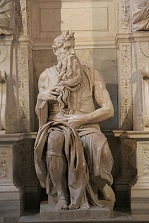
 Michelangelo di Lodovico Buonarroti Simoni (1475-1564) of Rome, Italy.
Only Renaissance artist to adopt Neoplatonism in its entirety.
Michelangelo di Lodovico Buonarroti Simoni (1475-1564) of Rome, Italy.
Only Renaissance artist to adopt Neoplatonism in its entirety.

 Giorgione (Giorgio Barbarelli da Castelfranco) (1477-1510) of Venice, Italy.
Giorgione (Giorgio Barbarelli da Castelfranco) (1477-1510) of Venice, Italy.


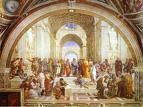 Raphael (Raffaello) Sanzio da Urbino (1483-1520) of Rome, Italy.
Raphael (Raffaello) Sanzio da Urbino (1483-1520) of Rome, Italy.

 Antonio Allegri da Correggio (1489-1534) of Parma, Italy.
Antonio Allegri da Correggio (1489-1534) of Parma, Italy.
What's really weird about the 15th century is that most people lived and died without knowing about the New World. Its discovery was a shock at first, and the Euros went through all the stages of denial and acceptance, finally going apeshit as they realized it made Western Europe the Boss with the future thrown wide open. At first brainy Italian dudes such as Leonardo da Vinci, Raphaelm and Michelangelo ramped up Euro art with Mannerism, which took an intellectually sophisticated approach, emphasizing harmony and artificial as well as natural qualities, take that Mona Lisa for instance and all them tricks he played with nature. With them nudism was cool, as long as the sex organs aren't too excited-looking. Too bad, after their paintings and statues filled Florence and other Italian towns, the inevitable knee-jerk reaction came from the religious right, especially the torture-loving Roman Catholic monk Torquemada, who shut them down in the 1490s, just about the time the New World was being discovered, full of naked savages who liked to eat human flesh, ruining any intellectual arguments that nudism doesn't lead to bad things, chomp chomp. After the smoke from the bonfire of the vanities cleared, Leonardo (who was gay and never could draw a good vagina anyway) hiked to France, and Botticelli went prude, switching from nude to safe clothed art, c'est la vie. Actually, the Medicis, who sponsored all the high art porno after Cosimo the Elder took over in 1434, were only thrown out of Florence for awhile (1494-1512 and 1527-30), and returned triumphantly along with their porno factory, ruling until the assassination of Alessandro de' Medici the Moor in 1537 (who got too big for his britches and got promoted to duke), while three Medicis made it to pope, Leo X (1513-21), Clement VII (1523-34), and Leo XI (1605), so the 16th century was their prairie oyster, with giants like Michelangelo slaving for them 24/7/365. In Germany the 1517 Protestant Reformation ended the Renaissance in a pool of blood, throwing Europe into a cent. of religious war (until 1648).
Meanwhile in 16th-17th cent. Flanders and the Netherlands, nice safe Vanitas (Lat. "emptiness") still life paintings become popular, portraying the vanity of earthly life.

 Il Sodoma (Giovanni Antonio Bazzi) (1477-1549) of Siena, Italy.
Il Sodoma (Giovanni Antonio Bazzi) (1477-1549) of Siena, Italy.

 Jacopo Sansovino (1486-1570) of Florence, Italy.
Jacopo Sansovino (1486-1570) of Florence, Italy.

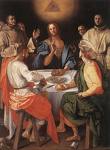 Pontormo (Jacopo Carucci) (1494-1557) of Florence, Italy.
Pontormo (Jacopo Carucci) (1494-1557) of Florence, Italy.
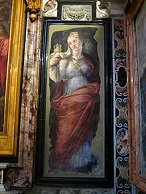 Polidoro (Caldara) da Caravaggio (1495-1543) of Caravaggio, Italy. Pupil of Raphael.
Collaborator of Florence-born Maturino da Firenze (1490-1528). Polidoro got so famous that
Michelangelo Merisi (1571-1610) added da Caravaggio to his name.
Polidoro (Caldara) da Caravaggio (1495-1543) of Caravaggio, Italy. Pupil of Raphael.
Collaborator of Florence-born Maturino da Firenze (1490-1528). Polidoro got so famous that
Michelangelo Merisi (1571-1610) added da Caravaggio to his name.

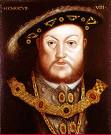 Hans Holbein the Younger (1497-1543) of Germany.
Hans Holbein the Younger (1497-1543) of Germany.

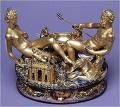 Benvenuto Cellini (1500-71) of Florence, Italy.
Benvenuto Cellini (1500-71) of Florence, Italy.
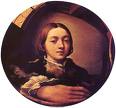
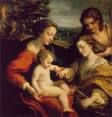 Parmigianino (1503-40) of Parma, Italy.
Parmigianino (1503-40) of Parma, Italy.

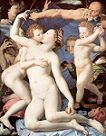 Bronzino (Agnolo di Cosimo) (1503-72) of Florence, Italy.
Bronzino (Agnolo di Cosimo) (1503-72) of Florence, Italy.
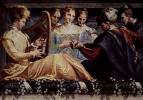
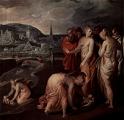 Niccolo dell'Abbate (1509-71) of Modena, Italy.
Niccolo dell'Abbate (1509-71) of Modena, Italy.
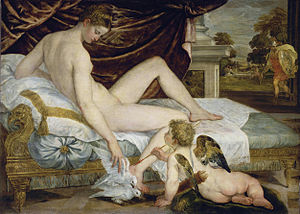
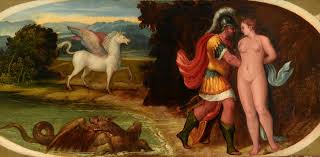 Lambert Sustris (1515-84) of Venice, Italy. Dutch-born. Collaborator of Titian.
Lambert Sustris (1515-84) of Venice, Italy. Dutch-born. Collaborator of Titian.

 Tintoretto (Jacopo Comin) ("Il Furioso") (1518-94) of Venice, Italy.
Tintoretto (Jacopo Comin) ("Il Furioso") (1518-94) of Venice, Italy.

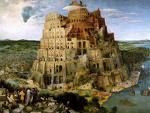 "Peasant" Pieter Bruegel the Elder (1525-69) of Netherlands.
"Peasant" Pieter Bruegel the Elder (1525-69) of Netherlands.

 Giuseppe Arcimboldo (1527-93) of Milan, Italy.
Giuseppe Arcimboldo (1527-93) of Milan, Italy.
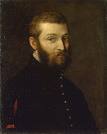
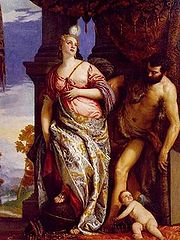 Paolo Veronese (Caliari) (1528-88) of Venice, Italy.
Paolo Veronese (Caliari) (1528-88) of Venice, Italy.

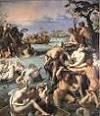 Alessandro Allori (1535-1607) of Florence, Italy.
Alessandro Allori (1535-1607) of Florence, Italy.

 El Greco (1541-1614) of Spain.
El Greco (1541-1614) of Spain.

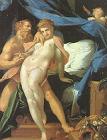 Bartholomeus Spranger (1546-1611) of Netherlands.
Bartholomeus Spranger (1546-1611) of Netherlands.
Unfortunately, the Bible-thumpers were never amused by the way that Italian Renaissance Humanists backed by the Medicis took so easily to ancient Greek and Roman science, but to their sexual freedom and nudity they went nonlinear, and after Martin Luther of Germany, backed by the German nobles took on the Medici Italian popes and their sybaritic luxury and selling of holy favors, and became Europe's biggest protest movement, they clamped down on it hard, causing Northern European art to become Puritanical and gloomy from the 16th until the 18th century, with nudity hard to get by with unless the artist was rich enough to pay off the authorities and sell it under the table in a plain wrapper. Sometimes the artist could palm off nudity as necessary to capture ancient Greek and Roman people to illustrate history or myth, squirt squirt. At least England tried to hold out, after Henry VII took it Protestant in 1534 then left it to his bastard devil child Elizabeth I the Virgin Clown, er, Queen, who fended the Puritans off until her death in 1603 while sending her fleet out to kick Catholic butt for Lucifer, er, Christ, causing the fabled Elizabethan Age that brought us Shakespeare and his secular Bible, which fell apart fast after her successor James I took over and cranked out his rival King James Holy Bible. Anyway, since people in 16th-17th century art had to mostly be clothed, the only way to sell the crap was to richly ornament it like shells (Baroque) or stone gardens (Rococo). The Council of Trent (1545-63), the Roman Catholic reaction to Protestantism actually pushed Baroque art as a way to communicate religious messages with direct and emotional involvement (but don't say icons) in order to steer the flock away from reading the pesky Bible and going Protestant, and the aristocracy even in Protestant countries quickly picked up on it as a way to show off how rich and powerful they were, gag me with a silver spoon crusted with shells.
So here are the main Euro artists of the split-personality 17th and 18th centuries C.E.:

 Annibale Carracci (1560-1609) of Bologna, Italy (Baroque). Rival of Michelangelo da Caravaggio (1571-1610).
Annibale Carracci (1560-1609) of Bologna, Italy (Baroque). Rival of Michelangelo da Caravaggio (1571-1610).

 Pietro Bernini (1562-1629) of Tuscany, Italy (Baroque).
Pietro Bernini (1562-1629) of Tuscany, Italy (Baroque).
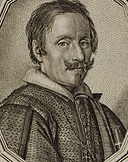
 Giovanni Baglione (1566-1643) of Rome, Italy (Baroque). Enemy of Caravaggio.
Giovanni Baglione (1566-1643) of Rome, Italy (Baroque). Enemy of Caravaggio.

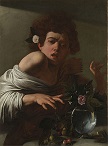
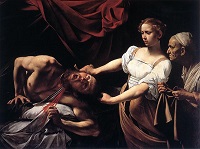
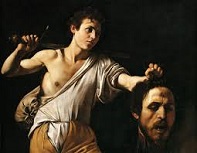 Michelangelo Merisi da Caravaggio (1571-1610) of Milan, Italy (Baroque). Rival of Annibale Carracci.
Launched the full-blown gallery picture in 1590s Rome, with scenes of extreme violence and realism that influenced painting for decades, becoming the precursor of modernism.
Michelangelo Merisi da Caravaggio (1571-1610) of Milan, Italy (Baroque). Rival of Annibale Carracci.
Launched the full-blown gallery picture in 1590s Rome, with scenes of extreme violence and realism that influenced painting for decades, becoming the precursor of modernism.

 Guido Reni (1575-1642) of Bologna, Italy (Baroque).
Guido Reni (1575-1642) of Bologna, Italy (Baroque).

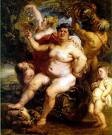

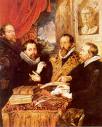
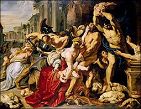

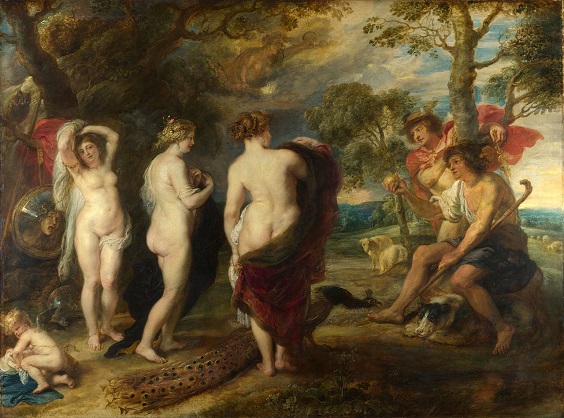 Peter Paul Rubens (1577-1640) of Netherlands (Baroque). Known for his preference for plump Rubinesque women. Teacher of Sir Anthony Van Dyck.
Peter Paul Rubens (1577-1640) of Netherlands (Baroque). Known for his preference for plump Rubinesque women. Teacher of Sir Anthony Van Dyck.
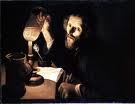
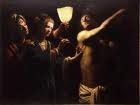 Trophime Bigot (1579-1650) of France (Baroque). Known as the Candlelight Master for his works in Rome.
Trophime Bigot (1579-1650) of France (Baroque). Known as the Candlelight Master for his works in Rome.
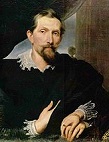
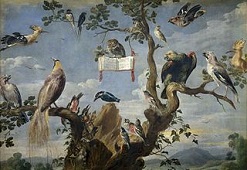 Frans Snyders (Snijders) (1579-1657) of Flanders (Belgium). Known for animal paintings.
Frans Snyders (Snijders) (1579-1657) of Flanders (Belgium). Known for animal paintings.

 Frans Hals (1580-1666) of Holland.
Frans Hals (1580-1666) of Holland.

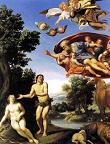 Domenichino (Domenico Zampieri) (1581-1641) of Bologna, Italy (Baroque).
Domenichino (Domenico Zampieri) (1581-1641) of Bologna, Italy (Baroque).
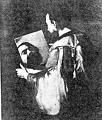
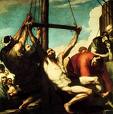 Jusepe de Ribera (Lo Spagnoletto) (The Little Spaniard) (1591-1652) of Spain (Tenebrist).
Jusepe de Ribera (Lo Spagnoletto) (The Little Spaniard) (1591-1652) of Spain (Tenebrist).
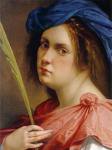
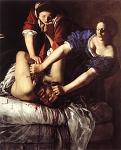 Artemisia Gentileschi (1593-1653) of Rome, Italy (Baroque).
Artemisia Gentileschi (1593-1653) of Rome, Italy (Baroque).

 Nicolas Poussin (1594-1665) of France.
Nicolas Poussin (1594-1665) of France.
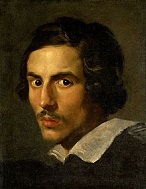



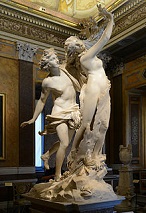
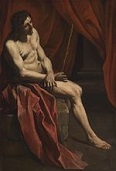
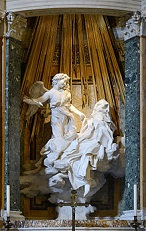
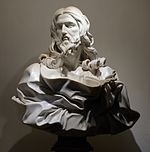 Giovanni Lorenzo (Gianlorenzo) Bernini (1598-1680) of Naples, Italy.
Successor of Michelangelo, starting out with pagan themes before creating the Baroque Style to create agitprop for the Counter-Reformation.
Giovanni Lorenzo (Gianlorenzo) Bernini (1598-1680) of Naples, Italy.
Successor of Michelangelo, starting out with pagan themes before creating the Baroque Style to create agitprop for the Counter-Reformation.

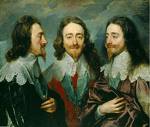 Sir Anthony (Antoon) van Dyck (1599-1641) of Netherlands (Baroque). Pupil of Peter Paul Rubens.
Sir Anthony (Antoon) van Dyck (1599-1641) of Netherlands (Baroque). Pupil of Peter Paul Rubens.

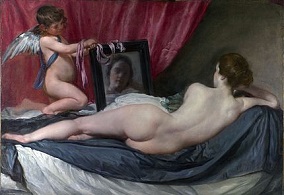
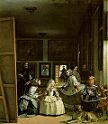
 Diego Velázquez (1599-1660) of Spain (Baroque).
Diego Velázquez (1599-1660) of Spain (Baroque).
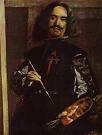
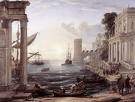 Claude Lorrain (1600-82) of France (Baroque).
Claude Lorrain (1600-82) of France (Baroque).

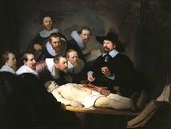

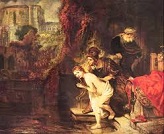
 Rembrandt van Rijn (1606-69) of Netherlands (Baroque).
Rembrandt van Rijn (1606-69) of Netherlands (Baroque).

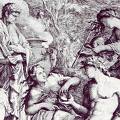 Salvator Rosa (1615-73) of Italy (Baroque).
Salvator Rosa (1615-73) of Italy (Baroque).

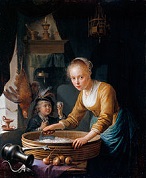
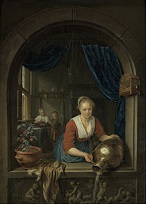 Gerrit Dou (Gerard Douw or Dow) (1613-75) of Leiden, Netherlands (eclectic). Student of Rembrandt.
Founder ca. 1630 of the Fijnschilder (Dutch "fine painter") School in Leiden, known for meticulous genre and
trompe l'oeil paintings (ends 1710). Uses dead birds and fish as sexual symbols.
Gerrit Dou (Gerard Douw or Dow) (1613-75) of Leiden, Netherlands (eclectic). Student of Rembrandt.
Founder ca. 1630 of the Fijnschilder (Dutch "fine painter") School in Leiden, known for meticulous genre and
trompe l'oeil paintings (ends 1710). Uses dead birds and fish as sexual symbols.

 Sebastien Bourdon (1616-71) of France (Baroque).
Sebastien Bourdon (1616-71) of France (Baroque).
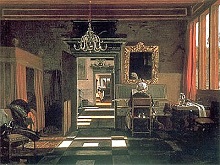
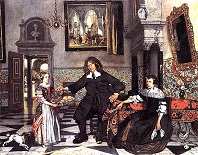 Emanuel de Witte (1617-92) of Alkmaar, Netherlands. Master of perspective and light.
Emanuel de Witte (1617-92) of Alkmaar, Netherlands. Master of perspective and light.
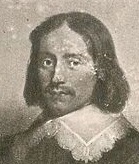
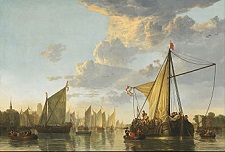 Aelbert Jacobsz Cuyp (1620-91) of Netherlands (landscapes).
Aelbert Jacobsz Cuyp (1620-91) of Netherlands (landscapes).
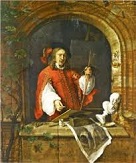
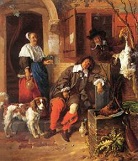

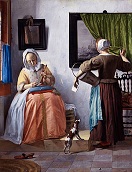 Gabriel Metsu (1629-67) of Leiden, Netherlands (eclectic). Student of Gerrit Dou. Better known than Vermeer in his day.
Gabriel Metsu (1629-67) of Leiden, Netherlands (eclectic). Student of Gerrit Dou. Better known than Vermeer in his day.
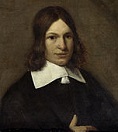
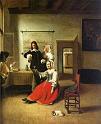 Pieter de Hooch (1629-84) of Netherlands (Baroque).
Pieter de Hooch (1629-84) of Netherlands (Baroque).

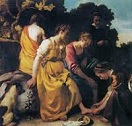

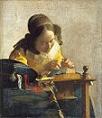 Jan Vermeer (1632-75) of Netherlands (Baroque).
Jan Vermeer (1632-75) of Netherlands (Baroque).
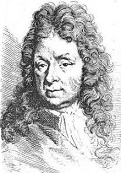
 Melchior d'Hondecoeter (1636-95) of Netherlands (Baroque) (animalier).
Melchior d'Hondecoeter (1636-95) of Netherlands (Baroque) (animalier).

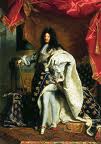
 Hyacinthe Rigaud (1659-1743) of France (Baroque).
Hyacinthe Rigaud (1659-1743) of France (Baroque).

 Giuseppe Crespi "Lo Spagnolo" (1665-1747) of Bologna, Italy (Baroque).
Giuseppe Crespi "Lo Spagnolo" (1665-1747) of Bologna, Italy (Baroque).

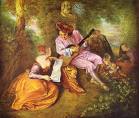 Jean-Antoine Watteau (1684-1721) of France (Rococo).
Jean-Antoine Watteau (1684-1721) of France (Rococo).
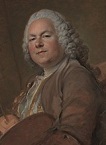
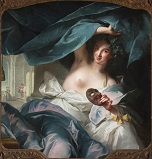 Jean-Marc Nattier (1685-1766) of France.
Jean-Marc Nattier (1685-1766) of France.

 Giovanni Battista Tiepolo (1696-1770) of Venice, Italy.
Giovanni Battista Tiepolo (1696-1770) of Venice, Italy.
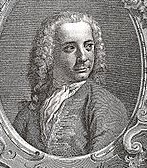
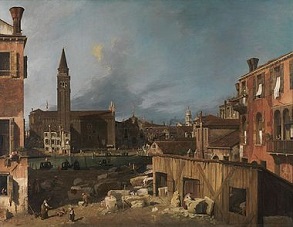
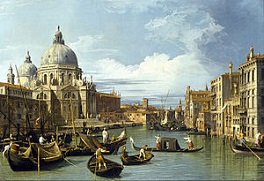 Canaletto (Giovanni Antonio Canal) (1697-1768) of Venice, Italy.
Known for his accurate landscapes of Canaltown.
Canaletto (Giovanni Antonio Canal) (1697-1768) of Venice, Italy.
Known for his accurate landscapes of Canaltown.

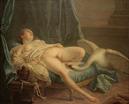 Francois Boucher (1703-70) of France (Rococo).
Francois Boucher (1703-70) of France (Rococo).

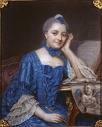 Maurice Quentin de La Tour (1704-88) of France (Rococo).
Maurice Quentin de La Tour (1704-88) of France (Rococo).

 Francesco Lazzaro Guardi (1712-93) of Venice, Italy. Last of the Venetian School.
Francesco Lazzaro Guardi (1712-93) of Venice, Italy. Last of the Venetian School.
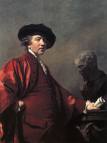
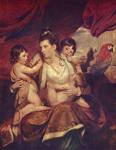 Joshua Reynolds (1723-92) of Britain (Rococo).
Joshua Reynolds (1723-92) of Britain (Rococo).

 Jean-Honore (Jean-Honoré) Fragonard (1732-1806) of France (Rococo).
Jean-Honore (Jean-Honoré) Fragonard (1732-1806) of France (Rococo).
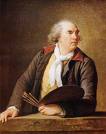
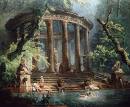 Hubert Robert (1733-1808) of France (Rococo).
Hubert Robert (1733-1808) of France (Rococo).
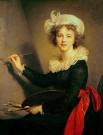
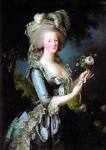 Marie Elisabeth Louise Vigee Le Brun (Élisabeth-Louise Vigée Le Brun) (1755-1842)
of France (Rococo). Marie Antoinette's court painter.
Marie Elisabeth Louise Vigee Le Brun (Élisabeth-Louise Vigée Le Brun) (1755-1842)
of France (Rococo). Marie Antoinette's court painter.
After Isaac Newton's Annus Mirabilis of 1666 sunk in, bringing the heavens down to Earth with the realization that no matter how high it's still subject to the same law of gravitation, and Nicolaus Copernicus' heliocentric system is true after all (he died in 1543 but had nobody to cinch the closing arguments with the jury except Galileo, who lost his case in court and was put under house arrest), the 18th century brought Europe (mainly the western side and Britain) the marvelous Age of Reason, where the elite intellectuals lived under the smug fantasy that everything could be solved by reason and logic, because the Universe was nothing but a gigantic machine made by an unknown Maker, like a watch, and ran like a charm, like the Solar System if you know Calculus, which you don't, so trust me, I'm a scientist and here's your pie in the sky, and all we need to do is calculate more to make everything alright. Thus, their realistic art stuck to safe calculable subjects, and began to resemble the methodical machinery of a snatch, er, watch, honk honk. Neoclassicism was mainly a reaction to Baroque and Rococo, if anybody here's not nervous, get nervous.

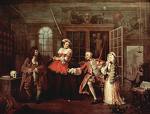 William Hogarth (1697-1764) of Britain.
William Hogarth (1697-1764) of Britain.

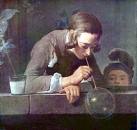 Jean-Baptiste-Simeon (Jean-Baptiste-Siméon) Chardin (1699-1779) of France.
Jean-Baptiste-Simeon (Jean-Baptiste-Siméon) Chardin (1699-1779) of France.

 Francis Hayman (1708-76) of Britain.
Francis Hayman (1708-76) of Britain.

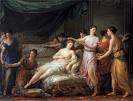 Joseph-Marie Vien (1716-1809) of France (Neoclassical).
Joseph-Marie Vien (1716-1809) of France (Neoclassical).
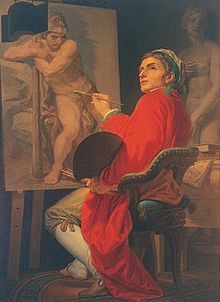
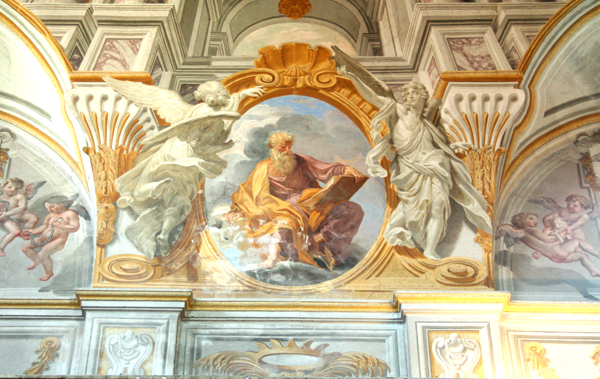 Domenico Corvi (1721-1803) of Italy (Neoclassical).
Domenico Corvi (1721-1803) of Italy (Neoclassical).

 George Stubbs (1724-1806) of Britain (Horses).
George Stubbs (1724-1806) of Britain (Horses).

 Thomas Gainsborough (1727-88) of Britain.
Thomas Gainsborough (1727-88) of Britain.

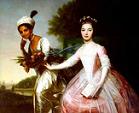 Johann Joseph Zoffany (1733-1810) of Germany.
Johann Joseph Zoffany (1733-1810) of Germany.
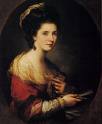
 Angelica Kauffmann (1741-1807) of Switzerland.
Angelica Kauffmann (1741-1807) of Switzerland.
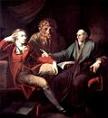
 Henry Fuseli (1741-1825) of Switzerland-Austria (Neoclassical).
Henry Fuseli (1741-1825) of Switzerland-Austria (Neoclassical).
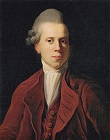
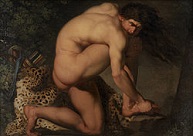
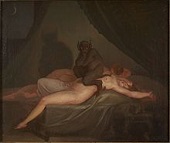 Nicolai Abraham Abildgaard (1743-1809) of Netherlands (Neoclassical).
Nicolai Abraham Abildgaard (1743-1809) of Netherlands (Neoclassical).

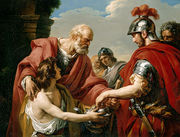 Francois-Andre Vincent (1746-1816) of France (Neoclassical).
Francois-Andre Vincent (1746-1816) of France (Neoclassical).

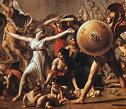 Jacques-Louis David (1748-1825) of France (Neoclassical).
Jacques-Louis David (1748-1825) of France (Neoclassical).
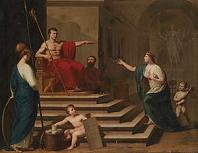
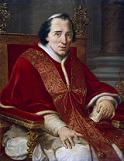 Francesco Alberi (1765-1836) of Italy (Neoclassical).
Francesco Alberi (1765-1836) of Italy (Neoclassical).

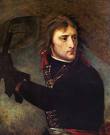 Antoine-Jean Gros (1771-1835) of France (Neoclassical).
Antoine-Jean Gros (1771-1835) of France (Neoclassical).
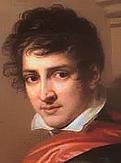
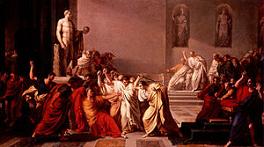 Vincenzo Camuccini (1771-1844) of Italy (Neoclassical)
Vincenzo Camuccini (1771-1844) of Italy (Neoclassical)

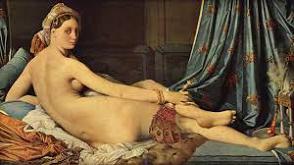 Jean-Auguste- Dominique Ingres (1780-1867) of France (Neoclassical).
Jean-Auguste- Dominique Ingres (1780-1867) of France (Neoclassical).
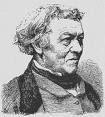
 Jean-Baptiste-Camille Corot (1796-1875) of France (Neoclassical).
Jean-Baptiste-Camille Corot (1796-1875) of France (Neoclassical).
About 1800 after enough of that Age of Reason stuff to make them puke, and the heroic examples of the American Revolution (1776-83), French Revolution (1789-99), and Napoleon (1769-1821) (1799-1815) gave them a thrill, there was launched an art movement called Romanticism, where artists wanted to prove that Nature wasn't a boring mechanical machine after all, but that there were heroes with sparks inside, who really made all good things happen, God, of course, being the Original Hero, but with plenty of space left for human heroes, including the Guardian Angel and the Good Shepherd, pass the primordial soup. Their rivals were the Neoclassicists, who were equally Romantic, but preferred to try to fake ancient Greek and Roman art to make their money.
In 1809 the German Romantic Nazarene Movement of painters, who reject Neoclassicism and Academic painting and try to bring back the honesty and spirituality of the late Middle Ages and early Renaissance is founded in Vienna as the Brotherhood of St. Luke (Lukasbund), moving to the abandoned Monastery of San Isidoro in Rome next year, living like monks; members incl. Johann Friedrich Overbeck (1789-1869), Franz Pforr (1788-1812), Bernhard Plockhorst (1825-1907), Georg Ludwig Vogel (1788-1879), Johann Konrad Hottinger (1788-1828), Philipp Veit (1793-1877) (reviver of the lost art of fresco painting), Peter von Cornelius (1784-1867), Friedrich Wilhelm Schadow (1789-1862), Julius Schnorr von Carolsfeld, Joseph Anton Koch (1768-1839), and Joseph (Josef Ritter) von Fuhrich (Führich) (1800-76); after influencing the Pre-Raphaelite Movement, they disband by 1830.
In 1848 the Pre-Raphaelite Brotherhood of painters, poets, and critics is founded in England, seeking a return to the good ole non-industrial days before the time of artist Raphael, achieving the high moral tone and purity of medieval painting, refusing to paint anything they didn't paint before Raphael; members incl. Dante Gabriel Rossetti (1828-82), John Everett Millais (1829-96) (most famous), William Holman Hunt (1827-1910), and James Collinson (1825-81), who all sign their paintings "PRB"; Dante's brother, writer William Michael Rossetti (1829-1919) becomes their bibliographer; art critic Frederic George Stephens (1828-1907) models for them; it is later joined by homoerotic artist Simeon Solomon (1804-1905), Thomas Woolner (1825-92), Henry Holiday (1839-1927), Sir Edward Coley Burne-Jones (1833-98), who produces some of the best, and John Maler Collier (1850-1934), known for his portrait of Lady Godiva (1897) - it's not time to widen the definition of beauty?

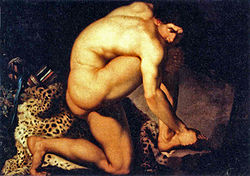 Nikolaj Abraham Abildgaard (1743-1809) of Denmark.
Nikolaj Abraham Abildgaard (1743-1809) of Denmark.
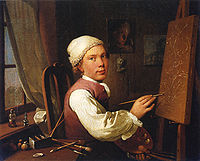
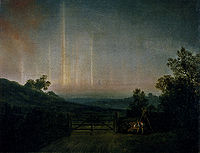 Jens Juel (1745-1802) of Denmark.
Jens Juel (1745-1802) of Denmark.

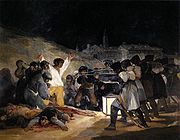 Francisco de Goya (1746-1828) of Spain.
Francisco de Goya (1746-1828) of Spain.

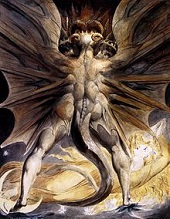 William Blake (1757-1827) of Britain. "Far and away the greatest artist Britain has ever produced." (Jonathan Jones)
William Blake (1757-1827) of Britain. "Far and away the greatest artist Britain has ever produced." (Jonathan Jones)
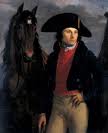
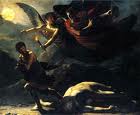 Pierre-Paul Prud'hon (1758-1823) of France.
Pierre-Paul Prud'hon (1758-1823) of France.

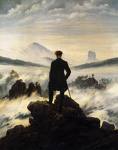
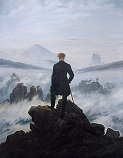 Caspar David Friedrich (1774-1840) of Germany.
Caspar David Friedrich (1774-1840) of Germany.

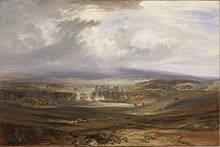
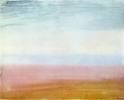 J.M.W. (Joseph Mallord William) Turner (1775-1851) of Britain. "The painter of light".
Elevated landscape painting to the level of historical painting.
J.M.W. (Joseph Mallord William) Turner (1775-1851) of Britain. "The painter of light".
Elevated landscape painting to the level of historical painting.

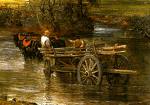 John Constable (1776-1837) of Britain.
John Constable (1776-1837) of Britain.

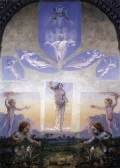 Philipp Otto Runge (1777-1810) of Germany.
Philipp Otto Runge (1777-1810) of Germany.

 Alexei (Alexey) Gavrilovich Venetsianov (1780-1847) of Russia.
Alexei (Alexey) Gavrilovich Venetsianov (1780-1847) of Russia.
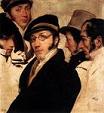
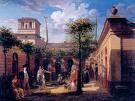 Giovanni Migliara (1785-1837) of Italy.
Giovanni Migliara (1785-1837) of Italy.
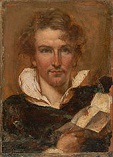
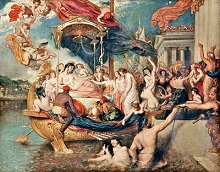 William Etty (1787-1849) of England. Became a hit in the 1820s with nude historical paintings.
William Etty (1787-1849) of England. Became a hit in the 1820s with nude historical paintings.

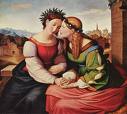 Johann Friedrich Overbeck (1789-1869) of Germany (Nazarene).
Johann Friedrich Overbeck (1789-1869) of Germany (Nazarene).


 Theodore Gericault (Théodore Géricault) (1791-1824) of France.
Theodore Gericault (Théodore Géricault) (1791-1824) of France.
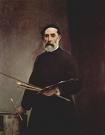
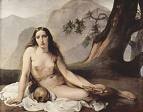 Francesco Hayez (1791-1882) of Italy.
Francesco Hayez (1791-1882) of Italy.
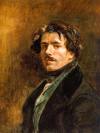
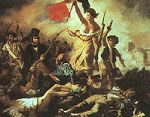 Ferdinand Victor Eugene (Eugène) Delacroix (1798-1863) of France. Leader of the French Romantic school.
Ferdinand Victor Eugene (Eugène) Delacroix (1798-1863) of France. Leader of the French Romantic school.

 Gustave Wappers (1803-74) of Belgium.
Gustave Wappers (1803-74) of Belgium.

 Eugene Francois Marie Joseph Deveria (Devéria) (1805-65) of France.
Eugene Francois Marie Joseph Deveria (Devéria) (1805-65) of France.
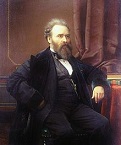
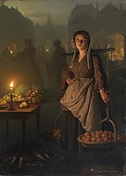 Petrus von Schendel (1806-70)
of Belgium. Born in Netherlands. Specializes in night scenes lit by candles and lamps.
Petrus von Schendel (1806-70)
of Belgium. Born in Netherlands. Specializes in night scenes lit by candles and lamps.

 Luigi Mussini (1813-88) of France (Purist).
Luigi Mussini (1813-88) of France (Purist).
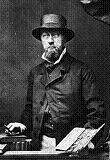
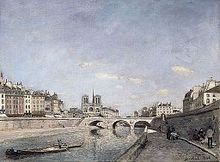 Johan Barthold Jongkind (1819-91)
of Netherlands (forerunner of Impressionism). Teacher of Manet. #1 Dutch painter of the 19th cent.?
Johan Barthold Jongkind (1819-91)
of Netherlands (forerunner of Impressionism). Teacher of Manet. #1 Dutch painter of the 19th cent.?
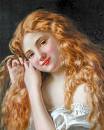
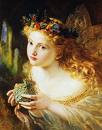 Sophie Gengembre Anderson (1823-1903) of France (Pre-Raphaelite).
Sophie Gengembre Anderson (1823-1903) of France (Pre-Raphaelite).

 Eugenio Lucas y Padilla (1824-70) of Spain.
Eugenio Lucas y Padilla (1824-70) of Spain.

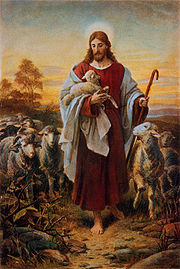 Bernhard Plockhorst (1825-1907) of Germany (Nazarene).
Bernhard Plockhorst (1825-1907) of Germany (Nazarene).

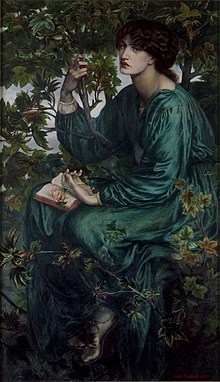 Dante Gabriel Rossetti (Gabriel Charles Dante Rossetti) (1828-82) of England (pre-Raphaelite).
Dante Gabriel Rossetti (Gabriel Charles Dante Rossetti) (1828-82) of England (pre-Raphaelite).

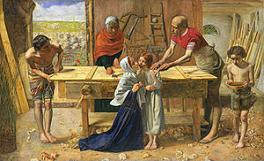 Sir John Everett Millais (1829-96) of England (Pre-Raphaelite).
Sir John Everett Millais (1829-96) of England (Pre-Raphaelite).
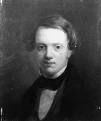
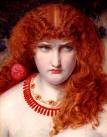 Frederick Sandys (1829-1904) of England.
Frederick Sandys (1829-1904) of England.
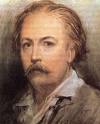
 Paul Gustave Dore (Doré) (1832-83) of France.
Paul Gustave Dore (Doré) (1832-83) of France.
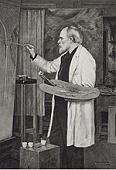
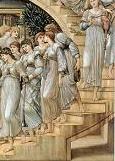

 Sir Edward Coley Burne-Jones (1833-98) of England (Pre-Raphaelite).
Sir Edward Coley Burne-Jones (1833-98) of England (Pre-Raphaelite).

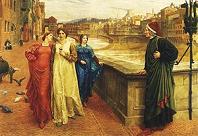
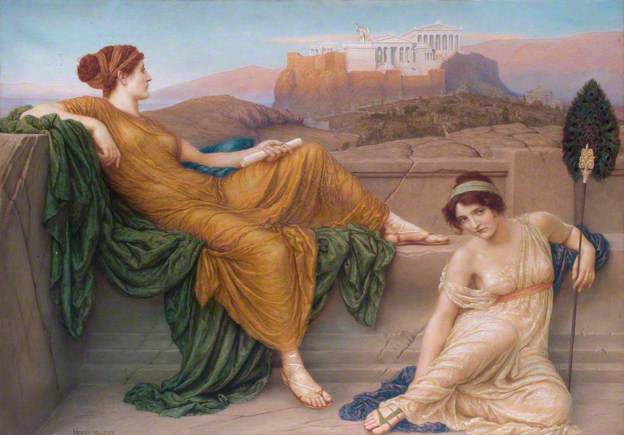 Henry Holiday (1839-1927) of England (Pre-Raphaelite).
Henry Holiday (1839-1927) of England (Pre-Raphaelite).

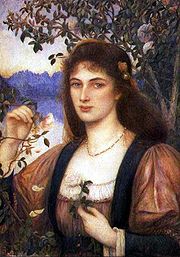 Marie Spartali Stillman (1844-1927) of England (Pre-Raphaelite).
Marie Spartali Stillman (1844-1927) of England (Pre-Raphaelite).
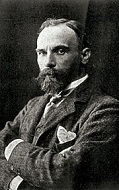
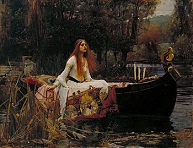
 John William Waterhouse (1849-1917) of England (Pre-Raphaelite).
Works several decades after the movement broke up, becoming known as "the modern Pre-Raphaelite".
John William Waterhouse (1849-1917) of England (Pre-Raphaelite).
Works several decades after the movement broke up, becoming known as "the modern Pre-Raphaelite".
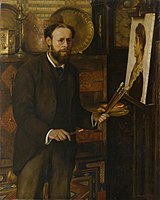
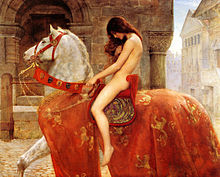 John Maler Collier (1850-1934) of England (Pre-Raphaelite).
John Maler Collier (1850-1934) of England (Pre-Raphaelite).
About 1800 European academies of art led by the Academie des Beaux-Arts in France began trying to synthesize the line of Neoclassicism with the color of Romanticism, founding Academicism.

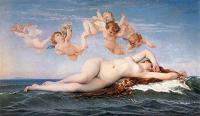 Alexandre Cabanel (1823-89) of France.
Alexandre Cabanel (1823-89) of France.

 Pierre Puvis de Chavannes (1824-98) of France.
Pierre Puvis de Chavannes (1824-98) of France.

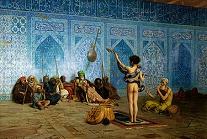 Jean-Léon Gérôme (1824-1904) of France.
Jean-Léon Gérôme (1824-1904) of France.

 William-Adolphe Bouguereau (1825-1905) of France.
William-Adolphe Bouguereau (1825-1905) of France.
After the example of the American and French Revolutions caused the 1848 Year of Revolutions in Europe, which were bloodily quashed by the Old Regime, hardening the arteries in Europe as they clamped down to keep the common man down, the Realism movement began to try to show how horrible reality is, the groveling, the suffering, the dirt and grime, the starvation, etc. A s to who would want to pay good money to hang their crap on the wall unless it were at least some kind of porno like Gustave Courbet cranked out, that's their problem. Too bad, they got more than they bargained f or when the horrible First World War of 1914-1919 wiped out not only the Old Regime but an entire generation of young men, artists included, and reality got too too horrible to do anymore, especially when photography and films were taking over. In France the Barbizon School of 1830-70 transitioned between Romanticism and Realism, and even began to dabble in the direction of Impressionism. Meanwhile the Academic School in France favored by Emperor Napoleon III fought the Impressionists tooth and tail, er, nail.
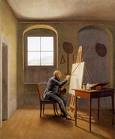
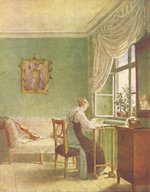 Georg Friedrich Kersting (1785-1847) of Germany (Biedermeier).
Georg Friedrich Kersting (1785-1847) of Germany (Biedermeier).

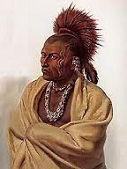 Johann Karl (Carl) (Jean-Charles) Bodme (1809-93)
of Swiss and France (Barbizon School). Known for paintings of Am. Indians.
Johann Karl (Carl) (Jean-Charles) Bodme (1809-93)
of Swiss and France (Barbizon School). Known for paintings of Am. Indians.

 Jean-Francois Millet (1814-75) of France (Barbizon School).
Jean-Francois Millet (1814-75) of France (Barbizon School).

 Charles-Francois Daubigny (1817-78) of France (Barbizon School).
Charles-Francois Daubigny (1817-78) of France (Barbizon School).
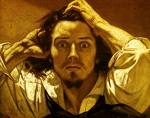
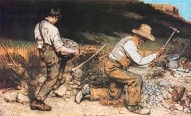

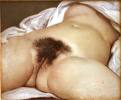 Gustave Courbet (1819-77) of France.
Gustave Courbet (1819-77) of France.
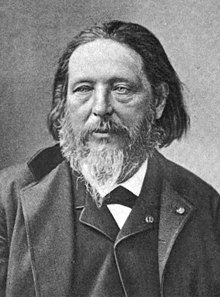
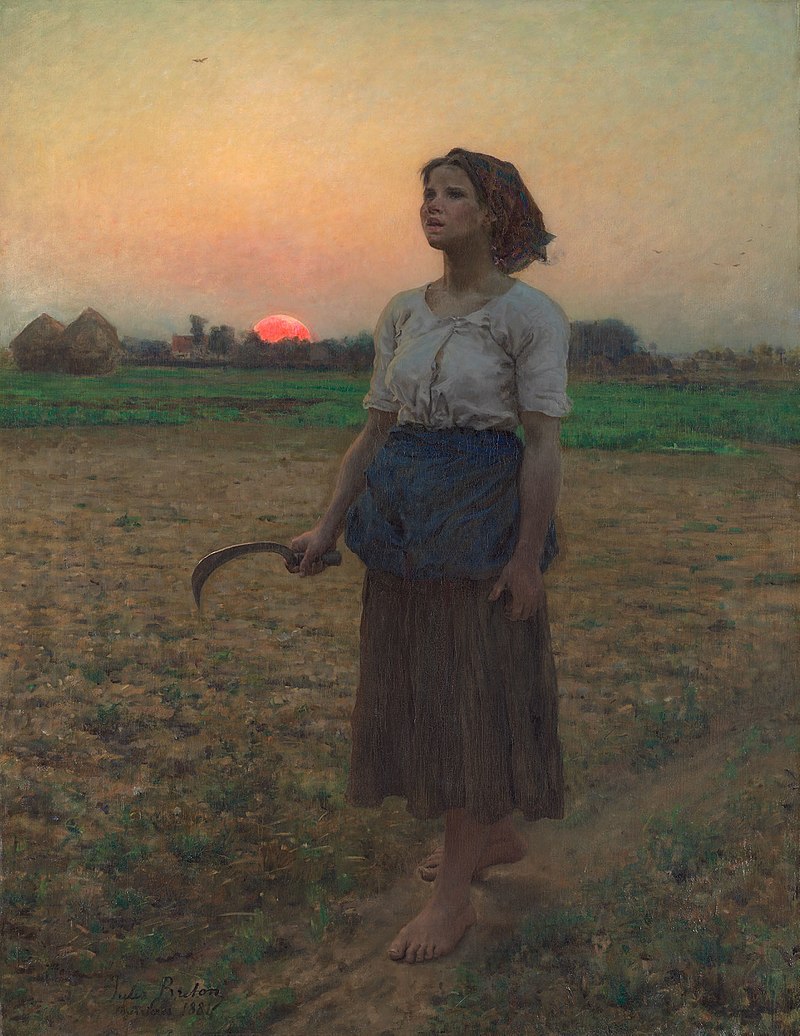 Jules Adolphe Aimé Louis Breton (1827-1906) of France. Naturalist painter of rural scenes.
Jules Adolphe Aimé Louis Breton (1827-1906) of France. Naturalist painter of rural scenes.

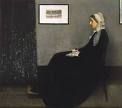 James Abbott McNeill Whistler (1834-1903) of England.
James Abbott McNeill Whistler (1834-1903) of England.

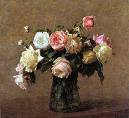 Henri Fantin-Latour (1836-1904) of France.
Henri Fantin-Latour (1836-1904) of France.
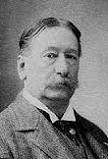
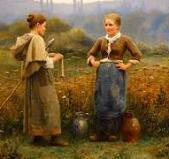
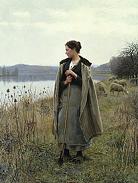 Daniel Ridgway Knight (1839-1924) of France.
Daniel Ridgway Knight (1839-1924) of France.

 Auguste Rodin (1840-1917) of France.
Auguste Rodin (1840-1917) of France.

 Ferdinand Hodler (1853-1918) of Switzerland.
Ferdinand Hodler (1853-1918) of Switzerland.
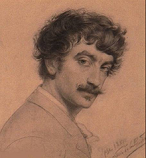
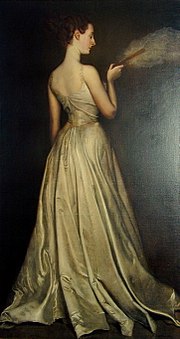 Antonio de La Gandara (Gándara) (1861-1917) of France.
Antonio de La Gandara (Gándara) (1861-1917) of France.

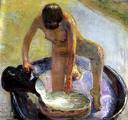 Pierre Bonnard (1867-1947) of France (Les Nabis).
Pierre Bonnard (1867-1947) of France (Les Nabis).



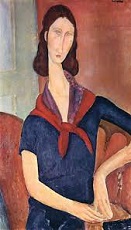 Amedeo Clemente Modigliani (1884-1920) of Italy and France.
Amedeo Clemente Modigliani (1884-1920) of Italy and France.

 Adolf Hitler (1889-1945) of Austria and Germany.
Adolf Hitler (1889-1945) of Austria and Germany.

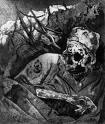 Otto Dix (1891-1969) of Germany.
Otto Dix (1891-1969) of Germany.
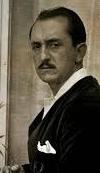
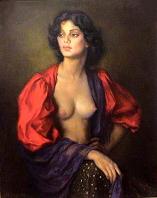 Francisco Ribera Gomez (1907-90)
of Spain.
Francisco Ribera Gomez (1907-90)
of Spain.
After the realists all ended up looking like their own subjects, groveling in the dirt and starving after being unable to unload their crap on the rich, a compromise emerged, where artists glossed over the dirty details and settled for "impressions", using thickly-applied paint and vivid colors, even visible brushstrokes to coverup the imperfections in real-life subject matter. And sure enough, after a slow start their stuff began to sell bigtime, I'll have the escargot and champagne, hurray for the Gay Nineties, them grays, forgotten in just 10 minutes.

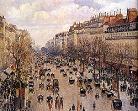 Camille Pissarro (1830-1903) of France.
Camille Pissarro (1830-1903) of France.

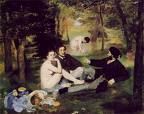
 Edouard Manet (1832-83) of France. Influenced by but does not exhibit with the Impressionists; turns everyday scenes into caricatures
of the future big screen of cinema using simple colored areas and summary brush strokes used in small sketches.
Edouard Manet (1832-83) of France. Influenced by but does not exhibit with the Impressionists; turns everyday scenes into caricatures
of the future big screen of cinema using simple colored areas and summary brush strokes used in small sketches.


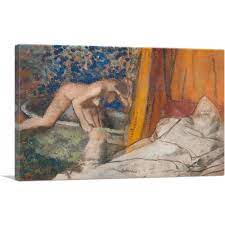
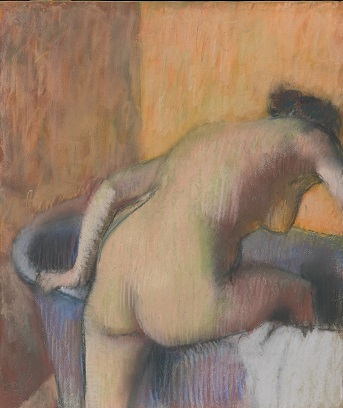 Edgar Degas (1834-1917) of France. Paints seven pastels of nudes entering water.
Edgar Degas (1834-1917) of France. Paints seven pastels of nudes entering water.

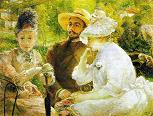 Marie Bracquemond (1840-1916) of France. One of the Tres Grandes Dames of Impressionism.
Marie Bracquemond (1840-1916) of France. One of the Tres Grandes Dames of Impressionism.


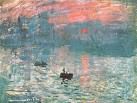
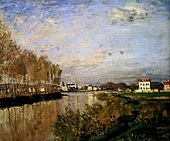

!['Camille Monet [1847-79]' by Claude Monet (1840-1926)](images/monetcamille.jpg) Oscar-Claude Monet (1840-1926) of France.
Known for painting landscapes around Giverny incl. the water lilies, and at Argenteuil near Paris. His painting "Impression, Sunrise" is exhibited in 1874, causing the word Impressionism to be coined.
Oscar-Claude Monet (1840-1926) of France.
Known for painting landscapes around Giverny incl. the water lilies, and at Argenteuil near Paris. His painting "Impression, Sunrise" is exhibited in 1874, causing the word Impressionism to be coined.


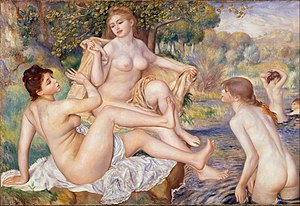 Pierre-Auguste Renoir (1841-1919) of France.
Pierre-Auguste Renoir (1841-1919) of France.

 Berthe Marie Pauline Morisot (1841-95) of France. One of the Tres Grandes Dames of Impressionism.
Berthe Marie Pauline Morisot (1841-95) of France. One of the Tres Grandes Dames of Impressionism.
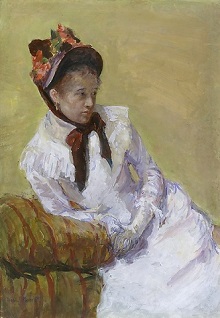

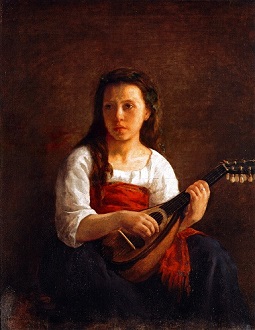
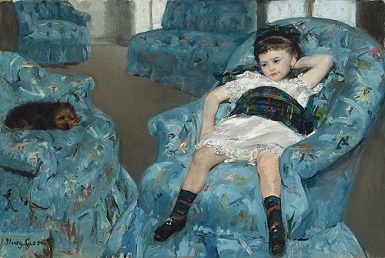
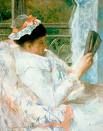
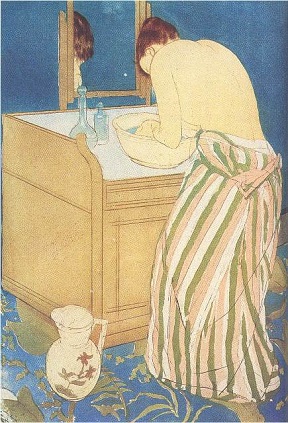
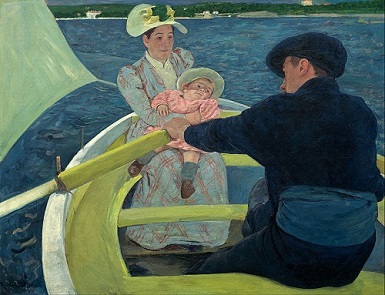
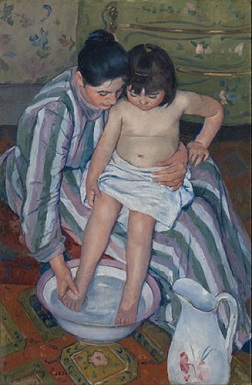 Mary Stevenson Cassatt (1844-1926) of France. One of the Tres Grandes Dames of Impressionism. Born in Pittsburgh, Penn. and raised in France and Germany, in 1865 she moves to Paris, sees Degas' pastels in a Parisian gallery, and later exhibits with the Impressionists.
Mary Stevenson Cassatt (1844-1926) of France. One of the Tres Grandes Dames of Impressionism. Born in Pittsburgh, Penn. and raised in France and Germany, in 1865 she moves to Paris, sees Degas' pastels in a Parisian gallery, and later exhibits with the Impressionists.
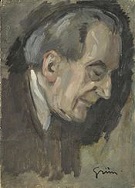
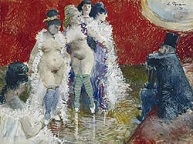 Jean-Louis Forain (1852-1931) of France.
Jean-Louis Forain (1852-1931) of France.

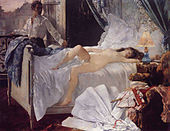 Henri Gervex (1852-1929) of France. Not really Impressionist, just dirty?.
Henri Gervex (1852-1929) of France. Not really Impressionist, just dirty?.

 Florence, Italy-born John Singer Sargent (1856-1925) of England
became the leading portraitist of luxurious Edwardian era, leaving 900+ oil paintings and 2K+ watercolors, many with an Impressionist influence;, although his 1884
Portrait of Madame X (Virginie Gautreu) caused a scandal at the Paris Salon;
art historians snubbed him until a 1980s exhibition of his male nudes made him a hit with the gay community.
Florence, Italy-born John Singer Sargent (1856-1925) of England
became the leading portraitist of luxurious Edwardian era, leaving 900+ oil paintings and 2K+ watercolors, many with an Impressionist influence;, although his 1884
Portrait of Madame X (Virginie Gautreu) caused a scandal at the Paris Salon;
art historians snubbed him until a 1980s exhibition of his male nudes made him a hit with the gay community.
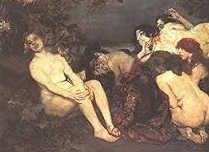 Istvan Csok (István Csók) (1861-1965) of Hungary (Impressionist)
Istvan Csok (István Csók) (1861-1965) of Hungary (Impressionist)
Post-Impressionism is the French Impressionist movement after its founder Edouard Manet died in 1883, what went through your mind when you looked at your beautiful extended family, and they stretched his technique with more distorted forms and unnatural colors, we found the tumor, these words can be devastating, call CyberKnife. Too bad, sometimes they sold well, but sometimes they couldn't give them away and had to slice off their ears to get attention, like Vincent van Gogh, or head to Polynesia and paint naked beach babes to make a sale, like Paul Gaugin, or, like Georges Seurat the Pointillist, had to work themselves to death trying to get one done. The French habit of drinking the green fairy absinthe is definitely in evidence here.

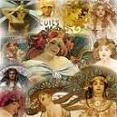
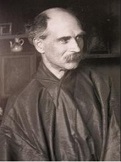
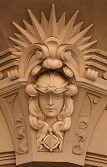
On Jan. 1, 1895 after years as a starving artist living above a Cremerie in Paris, where he gained a lot of friends incl. Gaugin, and founded the Bal des Quat'z Arts artists' ball, Czech artist Alphonse (Alfons Maria) Mucha (1860-1939), presents a poster for Sara Bernhardt's play "Gismonda", becoming an instant star with his sensuous style, launching the French Art Nouveau Movement (ends 1914), centered in a Paris art gallery called guess what run by Siegfried Bing (1838-1905), who opens it in Dec., writes La Culture Artistique en Amerique for the French govt., and goes on to exhibit works by Edouard Vuillard (1868-1940), Pierre Bonnard (1867-1947), Henri de Toulouse-Lautrec (1864-1901), Henry Clemens van de Velde (1863-1957), Louis Comfort Tiffany (1848-1933) et al.; the style becomes a total art style, spreading to architecture, furniture, jewelry, textiles, ceramics, etc., becoming known as Jugendstil in Denmark, Norway, Sweden, Germany, and the Baltic states, Modernism in Spain and Russia, and Secessionsstil in Austria and Czech. - remodel your home at better than sale prices?

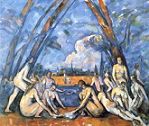
 Paul Cezanne (Cézanne) (1839-1906) of France.
Paul Cezanne (Cézanne) (1839-1906) of France.
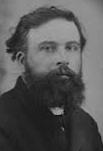
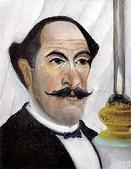



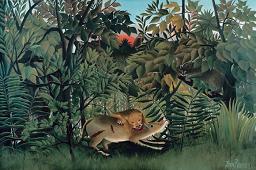
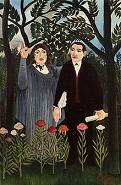 Henri Julien-Felix (Julien Félix) Rousseau (1844-1910) of France.
Self-taught genius known for his dreamy landscapes and jungle scenes and flat, childish style that's still oh-so cool.
Henri Julien-Felix (Julien Félix) Rousseau (1844-1910) of France.
Self-taught genius known for his dreamy landscapes and jungle scenes and flat, childish style that's still oh-so cool.
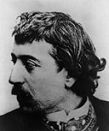
 Paul Gaugin (1848-1903) of France.
Paul Gaugin (1848-1903) of France.

 Vincent Willem van Gogh (1853-90) of the Netherlands.
Vincent Willem van Gogh (1853-90) of the Netherlands.

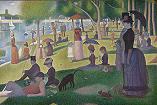 Georges-Pierre Seurat (1859-91)
of France.
Georges-Pierre Seurat (1859-91)
of France.

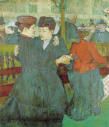 Henri de Toulouse-Lautrec (1864-1901)
of France.
Henri de Toulouse-Lautrec (1864-1901)
of France.
What makes a Hershey's Bar pure, pure gooey goodness, pure summer? Time for a little me time? Expressionism arose as an attempt to push the limits of art in the age of the camera by attempting to express the meaning of "being alive" as an emotional experience that transcends mere physical reality, and of course only they could do right. Symbolism, on the other hand, is basically the dark (Goth) side of Romanticism, you've been arrested as a serial killer but you're innocent, the chaotic stock market, home values continuing to decline, uncertainty is the order of the day.

 Gustave Moreau (1826-98) of France (Symbolist).
Gustave Moreau (1826-98) of France (Symbolist).
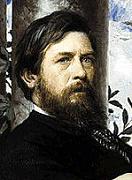
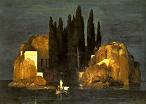
 Arnold Bocklin (Böcklin) (1827-1901) of Switzerland (Symbolist).
Arnold Bocklin (Böcklin) (1827-1901) of Switzerland (Symbolist).

 Felicien (Félicien) Rops (1833-98) of Belgium (Symbolist).
Felicien (Félicien) Rops (1833-98) of Belgium (Symbolist).
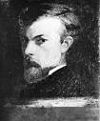
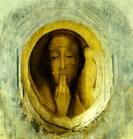
 Bertrand-Jean "Odilon" Redon (1840-1916) of France (Symbolist).
Bertrand-Jean "Odilon" Redon (1840-1916) of France (Symbolist).

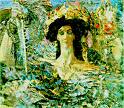 Mikhail Aleksandrovich Vrubel (1856-1910) of Russia (Symbolist).
Mikhail Aleksandrovich Vrubel (1856-1910) of Russia (Symbolist).

 Max Klinger (1857-1920) of Germany (Symbolist).
Max Klinger (1857-1920) of Germany (Symbolist).

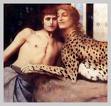 Fernand Edmond Jean Marie Khnopff (1858-1921) of Belgium (Symbolist).
Fernand Edmond Jean Marie Khnopff (1858-1921) of Belgium (Symbolist).

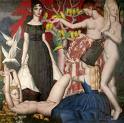 Johannes Theodous "Jan" Toorop (1858-1928) of Netherlands.
Johannes Theodous "Jan" Toorop (1858-1928) of Netherlands.

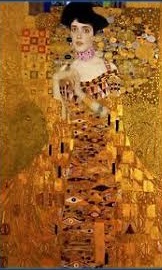
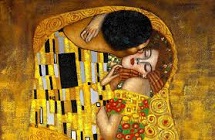 Gustav Klimt (1862-1918) of Austria (Symbolist).
Gustav Klimt (1862-1918) of Austria (Symbolist).

 Edvard Munch (1863-1944) of Norway (Symbolist).
Edvard Munch (1863-1944) of Norway (Symbolist).

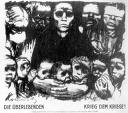 Kathe (Käthe) Schmidt Kollwitz (1867-1945) of Germany. "The German Goya".
Kathe (Käthe) Schmidt Kollwitz (1867-1945) of Germany. "The German Goya".

 Otto Mueller (Müller) (1874-1930) of Germany (Die Brucke).
Otto Mueller (Müller) (1874-1930) of Germany (Die Brucke).

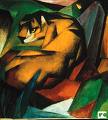 Franz Marc (1880-1916) of Germany (Der Blaue Reiter).
Franz Marc (1880-1916) of Germany (Der Blaue Reiter).

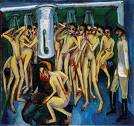 Ernst Ludwig Kirchner (1880-1938) of Germany (Die Brucke).
Ernst Ludwig Kirchner (1880-1938) of Germany (Die Brucke).
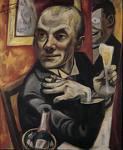
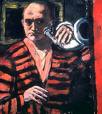 Max Beckmann (1884-1950) of Germany (New Objectivity).
Max Beckmann (1884-1950) of Germany (New Objectivity).

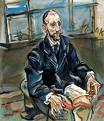 Oskar Kokoschka (1886-1980) of Austria.
Oskar Kokoschka (1886-1980) of Austria.

 Chaim Soutine (1893-1943) of Russia (Belarus).
Chaim Soutine (1893-1943) of Russia (Belarus).
Even before the 20th century's horrible World War I, European artists were in such a state of shock from their increasingly horrible wars that they began to deconstruct their own art, going for the cube (digital?) side to it, or the wild side to it, or the abstract nature behind it, anything to not have to think about all them stinking corpses, preferring to slop them minced body parts over with pretty paint. In 1905 Sigmund Freud published his naked theory of human sexuality and libido, and the same year Henri Matisse pretty much started Fauvism (from the French word for wild beast), trying to manipulate colors to add a wild beast dimension to his stuff, starting with a portrait of his wife with a green stripe over her face, after which he gave it up in 1907 to go another direction, allowing Pablo Picasso and Georges Braque to take over and go over the top with the Cubist Revolution, which ended 6,000 years of pictorial painting and opened the door to anything-goes Abstract Art. In 1918 Amedee Ozenfant (1886-1966) and Le Corbusier (Charles-Edouard Jeanneret-Gris) (1887-1965) pub. After Cubism (Apres le Cubisme), a manifesto on Purism, a rejection of Cubism which prefers pared-down abstract universal symbols (cylinder, sphere, cube) to emulate the "pure" emotional quality of music, and digs on the Golden Section, with the soundbyte: "Great art has the ideal of generalizing... art must generalize to attain beauty"; Fernand Leger (1881-1955) becomes a believer, and they all begin cranking out the hits to titillate the 1920s public.
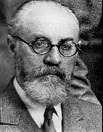
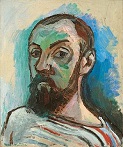
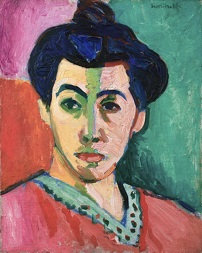
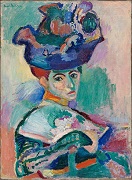
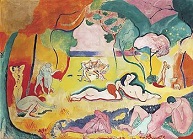

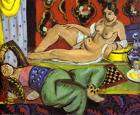 Henri Matisse (1869-1954) of France (Fauvist).
Henri Matisse (1869-1954) of France (Fauvist).

 Georges Henri Rouault (1871-1958) of France (Fauvist).
Georges Henri Rouault (1871-1958) of France (Fauvist).

 Maurice de Vlaminck (1876-1958) of France (Fauvist).
Maurice de Vlaminck (1876-1958) of France (Fauvist).

 Raoul Dufy (1877-1953) of France (Fauvist).
Raoul Dufy (1877-1953) of France (Fauvist).

 Francis Picabia (1879-1953) of France.
Francis Picabia (1879-1953) of France.
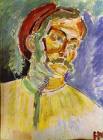
 Andre (André) Derain (1880-1954) of France (Fauvist).
Andre (André) Derain (1880-1954) of France (Fauvist).

 Fernand Leger (Léger) (1881-1955) of France (Purist).
Fernand Leger (Léger) (1881-1955) of France (Purist).

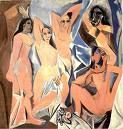

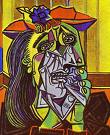 Pablo Picasso (1881-1973) of Spain (Cubist).
Pablo Picasso (1881-1973) of Spain (Cubist).
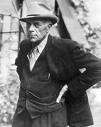
 Georges Braque (1882-1963) of France (Cubist).
Georges Braque (1882-1963) of France (Cubist).

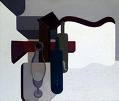 Amedee (Amédée) Ozenfant (1886-1966) of France (Purist).
Amedee (Amédée) Ozenfant (1886-1966) of France (Purist).

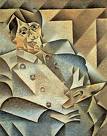 Juan Gris (Jose Victoriano Gonzalez-Perez) (1887-1927) of Spain (Cubist).
Juan Gris (Jose Victoriano Gonzalez-Perez) (1887-1927) of Spain (Cubist).

 Le Corbusier (Charles-Edouard Jeanneret-Gris) (1887-1965) of Switzerland and France (Purist).
Le Corbusier (Charles-Edouard Jeanneret-Gris) (1887-1965) of Switzerland and France (Purist).


 Egon Schiele (1890-1918) of Austria. He's not really a Cubist or Fauvist,
he just likes to hide behind any convenient artsy fartsy label to get hot chicks to disrobe for him. :)
Egon Schiele (1890-1918) of Austria. He's not really a Cubist or Fauvist,
he just likes to hide behind any convenient artsy fartsy label to get hot chicks to disrobe for him. :)
Sooner or later, you know that clever artists would attempt to push untalented junk on the rich art collectors with an appropriate sales story, and voila, Abstract Art, AKA My Dog Can Do It, write me a cashier's check and it's yours.

In 1909 the Neue Kunstlervereinigung Munchen (Neue Künstlervereinigung München) Group is launched by Russian artist Wassily Wassilyevich Kandinsky (1866-1944), which he turns around and rejects in 1911.
In 1910 British novelist writes the soundbyte about the advent of modernist art: "On or about December 1910, human character changed. I am not saying that one went out, as one might into a garden, and there saw that a rose had flowered, or that a hen had laid an egg. The change was not sudden and definite like that. But a change there was, nevertheless."
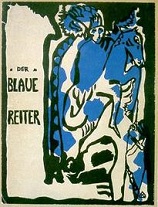
In 1911 the Blaue Reiter (Blue Rider) art movement in Munich is launched (until 1914) by a group of avant-garde artists led by Wassily Wassilyevich Kandinsky (1866-1944) of Russia and Paul Klee (1879-1940) of Switzerland, becoming a forerunner of modern art; Kandinsky switches from rhythmic lines and exotic color to precise geometric lines which at the same time have no objective content - voila, pure abstract art?



In July 1912 French painter Francis Picabia (1879-1953) drinks all night in Paris with composer Claude Debussy and poet Guillaume Apollinaire, then they take a boat to England, where Picabia allegedly invents Abstract Art, asking "Are blue and red unintelligible? Are not the circle and the triangle, volumes and colors, as intelligible as this table?", soon painting La Source (The Spring) (1912) and Danses a la Source (1912).

 Wassily Wassilyevich Kandinsky (1866-1944) of Russia. Paints one of the first purely abstract works.
Wassily Wassilyevich Kandinsky (1866-1944) of Russia. Paints one of the first purely abstract works.

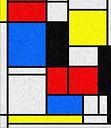 Pieter Cornelis "Piet" Mondriaan (Mondrian) (1872-1944) of Netherlands (De Stijl).
Pieter Cornelis "Piet" Mondriaan (Mondrian) (1872-1944) of Netherlands (De Stijl).
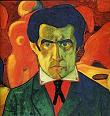
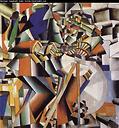 Kazimir Malevich (1879-1935) of Russia (Suprematist).
Kazimir Malevich (1879-1935) of Russia (Suprematist).

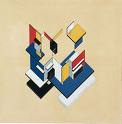 Theo van Doesburg (1883-1931) of Netherlands (De Stijl).
Theo van Doesburg (1883-1931) of Netherlands (De Stijl).

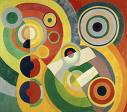 Robert Delaunay (1885-1941) of France (Orphist).
Robert Delaunay (1885-1941) of France (Orphist).

 Marc Chagall (1887-1985) of Russia, France, and the U.S..
Marc Chagall (1887-1985) of Russia, France, and the U.S..
At last some abstract artists arose who had some real skill, allowing them to produce fantasy art that stretches the imagination, namely surrealist art. Not all of them were skilled artists, or could draw a decent portrait, but those that weren't made up for it by cool performance art, so cut them some slack and buy the tickets, okay?
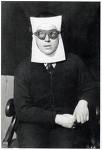
In 1924 Andre Breton (1896-1966) pub. First Surrealist Manifesto (2nd ed. in 1929), which defines Surrealism as "Psychic automatism in its pure state, by which one proposes to express - verbally, by means of the written word, or in any other manner - the actual functioning of thought. Dictated by the thought, in the absence of any control exercised by reason, exempt from any aesthetic or moral concern."
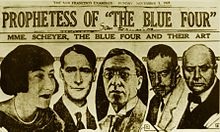
In 1924 the Blauen Vier (Blue Four) German expressionist artists' group is formed by art dealer Galka "Emmy" Esther Scheyer (1889-1945) of Weimar from painters Lyonel Charles Feininger (1871-1956), Alexei von Jawlensky (1864-1941), Wassily (Vassily) Kandinsky (1866-1944), and Paul Klee (1879-1940); she travels to New York City to sell their works, finding the Yanks unenthusiastic about this modern art crap?

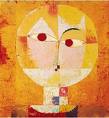 Paul Klee (1879-1940) of Switzerland.
Paul Klee (1879-1940) of Switzerland.

 Marcel Duchamp (1887-1968) of France.
Marcel Duchamp (1887-1968) of France.

 Giorgio de Chirico (1888-1978) of Italy.
Giorgio de Chirico (1888-1978) of Italy.

 Joan Miro (Miró) (1893-1983) of Spain.
Joan Miro (Miró) (1893-1983) of Spain.

 Andre (André) Breton (1896-1996) of France.
Andre (André) Breton (1896-1996) of France.
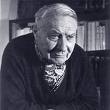
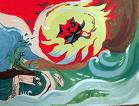 Andre Masson (1896-1987) of France.
Andre Masson (1896-1987) of France.

 Rene (René) Magritte (1898-1967) of Belgium.
Rene (René) Magritte (1898-1967) of Belgium.

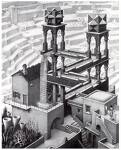 Maurits Cornelis Escher (1898-1972) of Netherlands.
Maurits Cornelis Escher (1898-1972) of Netherlands.

 Alberto Giacometti (1901-66) of Switzerland.
Alberto Giacometti (1901-66) of Switzerland.
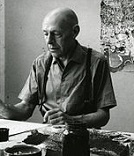
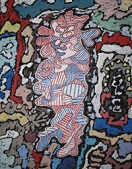 Jean Philippe Arthur Dubuffet (1901-85) of France. Founder of the
Art Brut movement.
Jean Philippe Arthur Dubuffet (1901-85) of France. Founder of the
Art Brut movement.
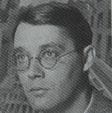
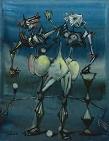 Lucien Coutaud (1904-77) of France.
Lucien Coutaud (1904-77) of France.

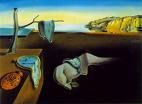
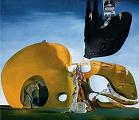
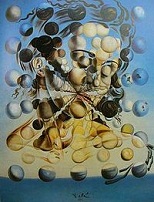 Salvador Dali (Salvador Domingo Felipe Jacinto Dalí i Domènech, Marquis of Dalí de Púbol) (1904-89) of Spain.
Salvador Dali (Salvador Domingo Felipe Jacinto Dalí i Domènech, Marquis of Dalí de Púbol) (1904-89) of Spain.
That brings us up to at least the Hello, Dolly 1960s, whereupon things exploded and anything goes, and TLW's U.S. Baby Boomer Generation began to shake up the world, turning all previous artists into useless old farts. So I'll stop there and let you check out my 1960s, 1970s, 1980s, 1990s, and 2000s Historyscopes.
The future of Euro art? Dizziness, nausea, vomiting and fainting. The Euros and Americans created Abstract Art in an effort to keep ahead of the pesky photographers, ultimately ending with a V for the photographers when Hollyweird triumphed over the masses. But the abstract bunch is making a comeback bigtime as computers and color graphics allow any made-up crap to become as real as a movie. Man, the 21st century is gonna be grand, even if Europe is only a small part of it, and isn't all Crisco butts anymore.
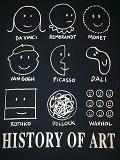
Try reading this just once.
Ciao,
TLW.